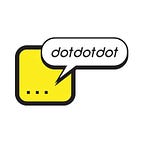Corporate museums — the challenge of representing the intangible
With renewed interest in digital technology storytelling, the corporate museum is at the centre of a debate among professionals and public and private institutions. Future scenarios are revealed, not just by technological innovation, but by a user experience which is a physical and digital interaction.
The digitisation of corporate archives and museums is topical. Digital allows stories to be told even without showing objects or providing dedicated physical rooms. Take, for example, Foundations which have digitised archives or need to have them digitised.
Companies are taking advantage of this opportunity because they understand the importance being accessible — showing their work and history for the “common good.” Each company tracks and exhibits their knowledge. Digital technology makes vanished or inaccessible collections, documents, works-of-art and materials and makes them accessible in the form of stories. An archive is no longer just a repository, but an information space for training and entertainment which is calibrated depending on the visitors.
Physical vs digital object
When designing an interactive and multimedia journey, we find ourselves dealing with documents and objects more often than works-of-art. Sometimes these objects and documents have an aesthetic value; other times they have little significance because the exhibition theme mainly lies in the process and the narration behind it. This is true for the Aboca Experience’s phytotherapeutic research (the interactive extension of the corporate museum, planned for 2020).
In each case, storytelling must interface with physical elements, despite being orchestrated using digital technologies. Nothing can have the same evocative capacity as the material presence of an object. But an object is not a fetish: its presence in the environment is calibrated to its ability to evoke concepts and images and associative values. Just as the mouse is a physical tool which supports digital, objects are a means to activate the experience.
Technology is not the project focus; it is a means and one of many storytelling tools. The focus must remain on the project, which is the content and experience of the visitor (UX). As a result, technology serves that experience.
Criticisms of technology obsolescence are often directed at this type of multimedia installation. This mostly concerns those works that seek the “wow” effect through technology. There are installations from the 1990s that, despite using dated technology, can still communicate in a powerful, empathetic and poetic way. It is necessary to design while foreseeing future technology and its obsolescence, maintenance phases and possible updating.
Between intangible and physical space
The architecture where the installations take shape is part of the project. It sets the physical limits and the boundaries within which everything takes place. The materials that make up the architecture are part of the story. The intangible is represented starting from materiality, and digital content comes from the environment’s physical and aesthetic design.
In the Aboca Experience, we tell the story of the cultivations, where the company extracts the active pharmaceutical ingredients, using projections of fields, materials and colours that suggest “nature” to the viewer. On the console, through which you can learn about the beneficial properties of plants, there are slides that contain their actual seeds, which are the trigger for their video projections. Inserting a seed has a semiotic and imaginative value that is much stronger than an activation button. Unlike virtual reality, the visitor’s experience is never detached from space, just as the content is not separated from the physical interface through which the visitor interacts.
The user experience is a balance of rhythms and accents between physical and digital elements — the search for harmony between the tangible and intangible.
When translating our companies’ and institutes’ communication objectives into interactive and multimedia stories that can be experienced by the public, we reorganise and transform their business values into a story. Corporate museum interaction design is a synthesis aimed at engaging people, by turning rarely-shared company research assets and exhibits into values.
Laura Dellamotta | Architect, General Manager & co-founder of Dotdotdot
Read more: Corporate Museum, future digital scenarios
